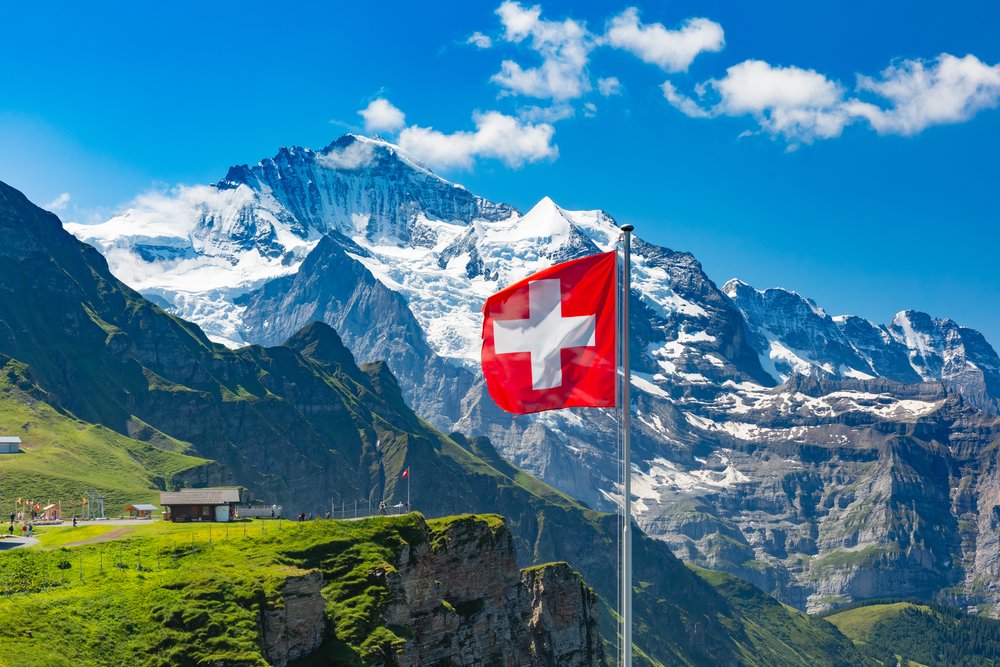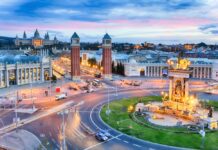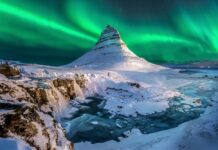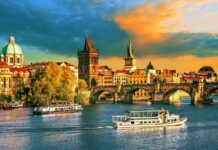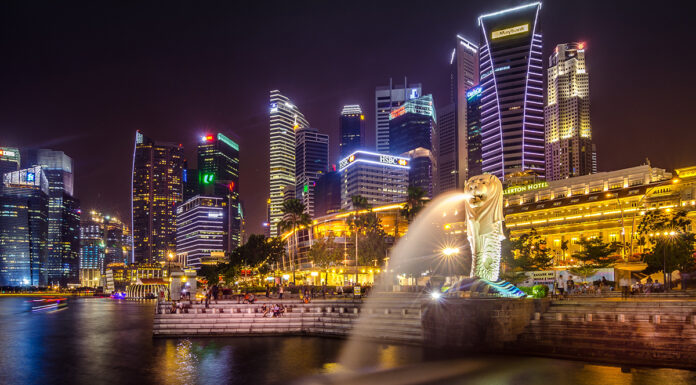Filling your travel memorabilia with snow-capped mountains, surreal alpine sceneries, and dreamy turquoise lakes calls for one easy solution–book a trip to Switzerland. A golden pass to a world of fairy tales, this bewitching country is notorious for its unending greeneries. But it doesn’t stop there.
Inside this landlocked country are quaint villages, historic buildings, and unique architecture. Mixed with its famous natural wonders, Switzerland can effortlessly give diversity a new name. Plus, you won’t run out of engaging activities here. Be it an unforgettable ski experience atop the sky-high Matterhorn or a cultural trip in Bern and Zurich, the top attractions in Switzerland are sure to give you traveling opportunities as endless as its majestic landscapes.
What to Expect When You Travel to Switzerland
Currency: Swiss Franc (CHf, Fr., SFr.)
Language: Swiss German is the main language used in the central, eastern, and northern parts of the country. But in many of its regions, locals also speak Italian, French, and Romansh.
Transportation: Switzerland is heavily invested in its railway network, making it convenient to travel by train. With punctuality and efficiency written all over its railway system, it’s easy to understand why the Swiss are proud train riders. Another option to get in-between cities is to book a long-distance bus.
Time Zone: Central European Standard Time (GMT+1)
Socket: Type J (3-pin) and Type C (2-pin)
Weather: A trip to Switzerland is made sweeter by its moderate weather conditions. Not too cold, humid, or hot, the country’s temperature makes up for a great traveling experience. The coldest months run from January to February, when temperatures range between -2° to 7° C. During spring, which usually lasts from March to May, the temperature is at around 8° to 15° C. Come summer, the temperature plays between 25° to 30 ° C.
Best Travel Times: The best time to book a trip to Switzerland greatly depends on your travel itinerary. But if you want to avoid crowded spots, it’s great to travel to Switzerland during its shoulder season–that’s between September and October or April and June. A season between summer and winter, the shoulder season is not big on outdoor activities. But it is generally a good time to appreciate its cityscapes. Switzerland’s ski season, on the other hand, starts from December to March.
Travel to Switzerland on a Budget: Is it Possible?
To set things straight, Switzerland is an expensive country–one of the most expensive European countries, to be exact. But while budget travelers are taken aback by the overall costing of a short trip to Switzerland, its otherworldly beauty makes up for its price tag. To give you a rough estimate, here’s what you can expect when you travel to Switzerland:
- Switzerland Hotels and Hostels: One of the best ways to travel to Switzerland on a budget is to stay in its hostel dorms, which charge $30 to $50 per night, depending on the city. This isn’t close to the usual $10 hostel stays in many countries, but it is a lot cheaper than staying in Switzerland hotels. For an overnight stay in a basic room, Switzerland hotels charge around $80 to $120. Look for something more extravagant and you’d spend up to $200 per night on Switzerland hotels alone. If you are traveling in a big group, the cheapest option is to book an Airbnb apartment, where rates are only double than hostel dorms.
- Food: While Switzerland hotels and hostels don’t offer the friendliest deals, you can keep your travel costing low by taking advantage of $9 meals in its cafes and bars. You can also cook your own meals, which is always the cheapest option. Food in Switzerland isn’t expensive unless you dine in its fancy restaurants.
- Other expenses: Entry to museums is average at $10 per person. But since you’re in Switzerland, it’s hard to miss out on its amazing outdoor activities. Snowboarding and skiing tickets cost around $30 to $75. To give allowance for other exciting adventures, prepare around $70 to $160 per day/activity.
All these considered, it’s quite challenging to plan your trip to Switzerland on a budget. But with proper planning, you can cut costs in some areas. For instance, if you’re going to visit two of its most expensive trails, you can get a Swiss Travel Pass. The pass gets you unlimited access to train, boat, and bus rides. It also gives you free entry to over 500 museums and a 50% discount on some of the country’s popular mountain excursions.
Top Attractions in Switzerland
Nit-picking the top attractions in Switzerland is like looking for a needle in a haystack–it’s hard to decide where to start. But to get you started on the right foot, we have grouped these incredible attractions based on two factors: beauty and proximity. By mapping out the best tourist spots based on location, you can save time and money as you travel to Switzerland.
Matterhorn and Zermatt
Best for: Skiing, snowboarding, and sight-seeing

For some travelers, the iconic Matterhorn is just a scenic view from afar. But for ski enthusiasts, this towering mountain is the realization of their dreams. At 4,478 meters high, the Matterhorn has steep and deadly curves. And even today, only the most skilled and ambitious climbers dare to take the challenge of climbing its summit.
The Matterhorn lies between Switzerland and Italy, and it has become a world-renowned landmark. At its foot is an enchanting small village, Zermatt, which is home to famous Switzerland hotels and resorts, horse-drawn carriages, and quaint chalets. The best part: motorized vehicles are not allowed in the area, so you’re guaranteed the freshest mountain breeze.
Proof that the Matterhorn has everything for every type of traveler, you can find activities here that perfectly suit your travel preferences. If you’re the outdoorsy type, you can either ski around its base or hike its nearby slopes. But if you want to just relax and enjoy the view, you can ride an aerial cable car in Zermatt or book a train ride. There are also many restaurants that offer the best views. Whichever way you go, one of the highest mountains of the Alps, AKA the Matterhorn, is sure to give you a beautiful adventure.
Lake Geneva and Jet d’Eau
Best for: Water skiing, kayaking, sight-seeing and exploring historical buildings
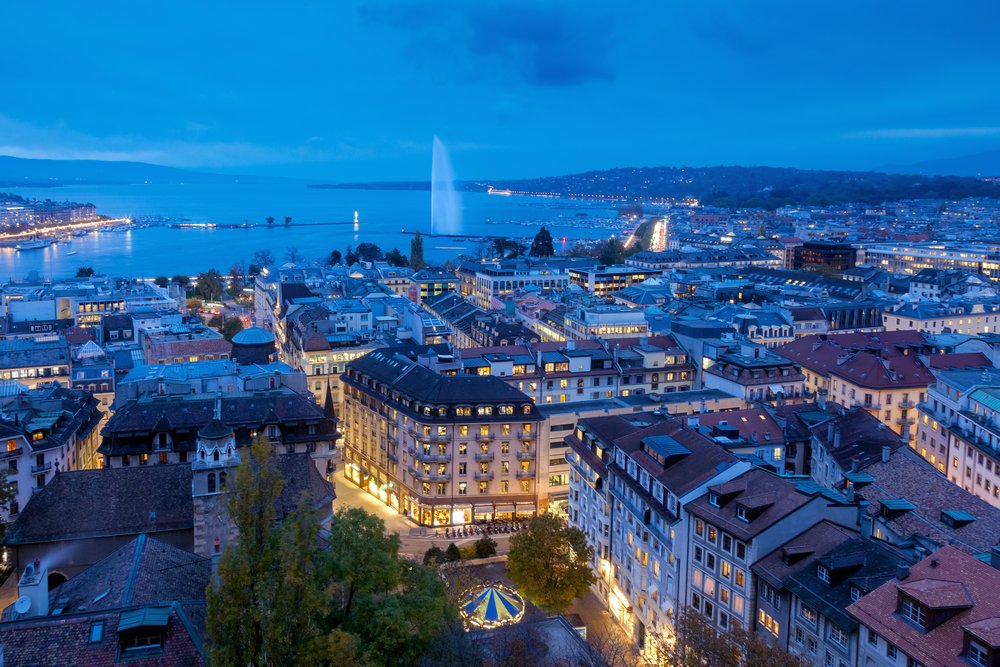
From a towering mountain comes the largest Alpine lake in Europe–Lake Geneva. The magnificent lake that widely reflects the Alps is so vivid, it looks as if it came out of a painting–or better yet, a masterpiece. The stretch starts from the western to the eastern shores, leaving enough room for tourists who’d like to either sight-see or engage in water activities.
One of the top attractions in Switzerland, the Jet d’Eau, can also be found in Lake Geneva. The Jet d’Eau is a giant water fountain that shoots water 140 meters up into the air, making it visible even when you’re from a distance. During special occasions, blue or pink lighting makes the fountain look even more stunning and festive.
Aside from flaunting scenic water views, Lake Geneva is all about injecting fun into your trip to Switzerland. Come summer, many travelers bask under the sun and engage in family-friendly water activities like kayaking, water skiing, and windsurfing. The lake is also surrounded by parks, along with an array of cultural landmarks. Take a walk to the old town and you’d find historic buildings and major landmarks like teh Grand Theatre and the Opera House.
Château de Chillon
Best for: Architectural and historical exploration
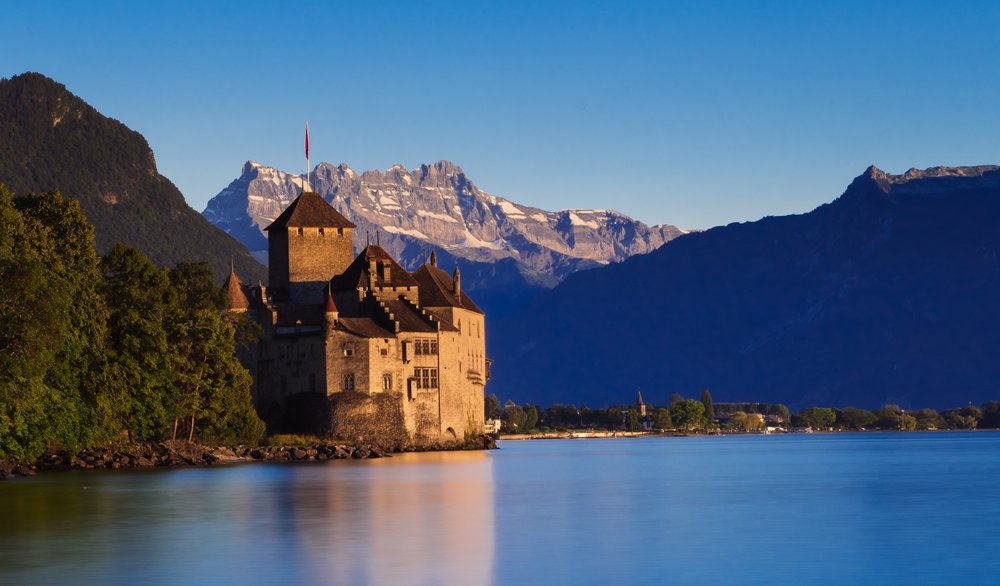
Château de Chillon, also called Chillon Castle, peacefully sleeps at the shores of Lake Geneva. Although we promised to group landmarks based on proximity, this castle is just too awe-inspiringly beautiful that it deserves another spotlight.
Situated near Montreux, this water castle withstood the test of time–over four centuries, to be precise. Inside the Chillon Castle are 14th-century artworks, 25 buildings, and circular walls. And if you want to breathe life into your dream fairy-tale-like wedding, the castle makes itself available for private events.
Because of its natural charms, the Chillon Castle continues to be an inspiration for writers and artists. Beautiful inside and out, the castle’s highlights include exceptional views of Lake Geneva, Great Halls, and Gothic underground chambers. So if you plan to visit Lake Geneva, don’t forget to pop over to this wonderful castle.
Jungfraujoch and Grindelwald
Best for: Sight-seeing and hiking
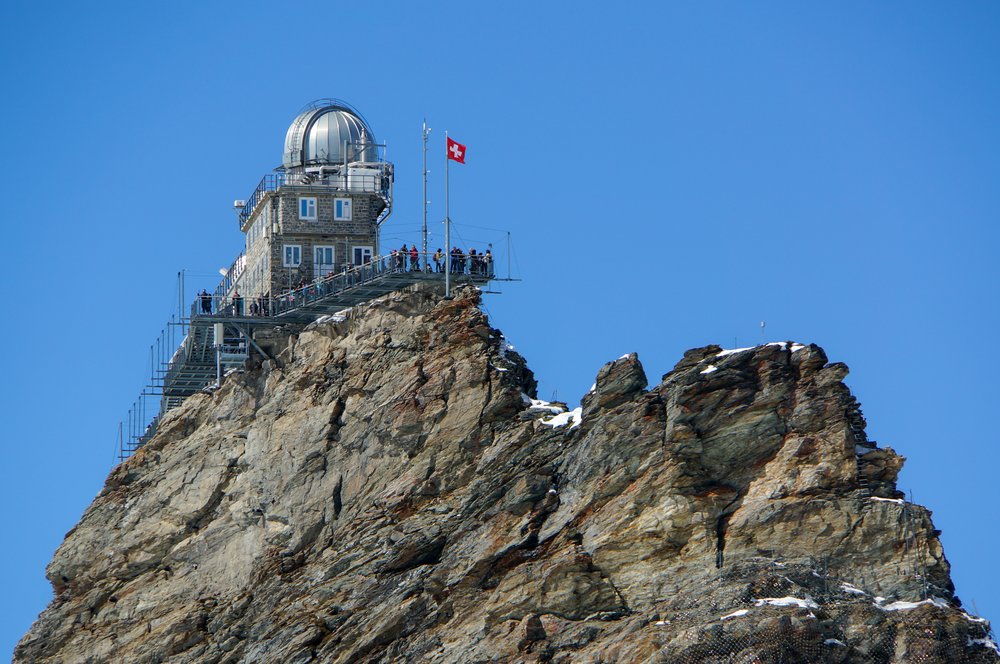
You may not be at the top of the world, but you can get to the top of Europe, which is famously called Jungfraujoch. Just like traveling to other parts of the country, Jungfraujoch is reachable by train. If you aren’t afraid of heights (and even if you are), you’d surely be amazed by the Sphinx Observatory, which is perched 3,571 meters above sea level. It is one of the highest observation stations in the world, and it gets you access to spectacular mountain summit views including the Monch, Eiger, and Jungfrau.
To be honest, you won’t see a lot of amenities once you reach Jungfraujoch–and that’s not why you should travel here either. As one of the top attractions in Switzerland, this high-altitude landmark gets you closest to the sky and to nature. The only downside: you can’t stay overnight here, so you only have a limited time to explore its beauty. But even so, Jungfraujoch makes sure your day overflows with unforgettable memories.
Just near Jungfraujoch is another famous landmark that can make your trip to Switzerland complete–the enchanting Grindelwald. Practically a glacier village that looks like the shooting ground of the Hobbit, Grindelwald offers a unique mix of peace and adventure. Located in Jungfau, this lovely village sleeps at the base of snow-capped mountains. If you’re an intrepid hiker, Grindelwald is a great start-off point if you plan to hike the Eiger, which is notorious for its difficult climbs.
Schilthorn
Best for: Sight-seeing and hiking
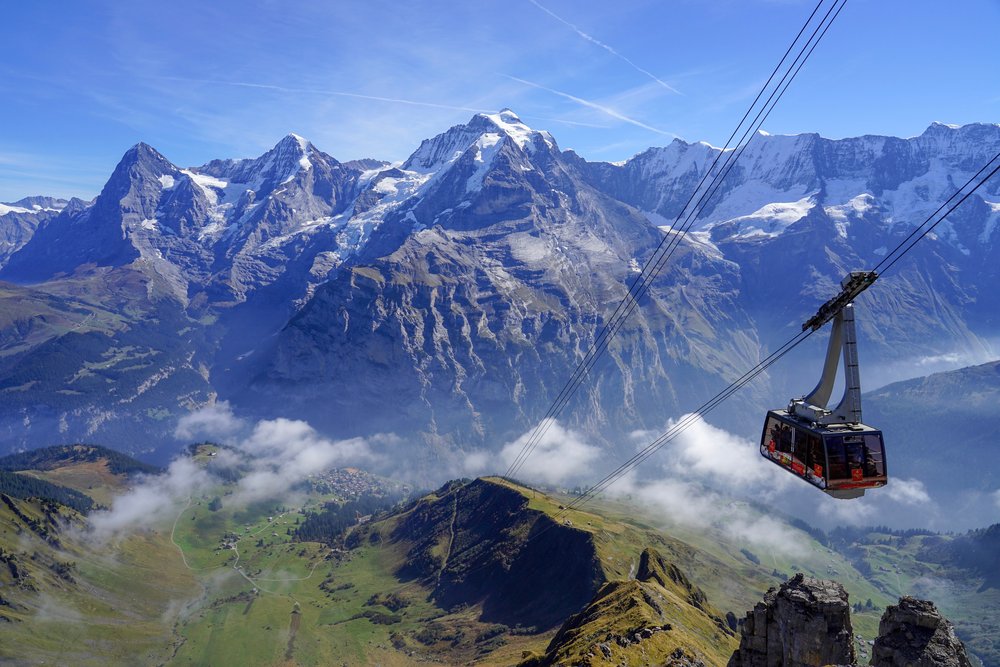
Now that we are at an all-time high, let’s keep up with our pace (and altitude) and explore another stratospheric landmark, the Schilthorn. If you’ve always dreamt of a dine-in-the-sky experience, Schilthorn can give you that and more. How does drinking coffee at a 3,000-meter-high revolving restaurant sound like? If you’re up for that kind of adventure, a visit to Schilthorn is perfect for you.
Even better, Schilthorn’s surprise doesn’t stop at a hearty platter. Its Skyline and Thrill Walk, which can challenge your fear of heights in all the crazy, heart-pumping ways, has turned into a huge attraction among tourists. Here, you get to enjoy amazing views of the Jungfrau massif as you walk through a platform made of glass and steel.
From Schiltorn’s viewpoints, you can get a closer look at the Vosges, Jungfrau, and the Jura mountain range. The Blumental Panorama Trail is also famous among entry-level hikers who want to get a closer view of the Swiss Alps.
Interlaken
Best for: Sight-seeing, paragliding, hiking, climbing, and other outdoor activities
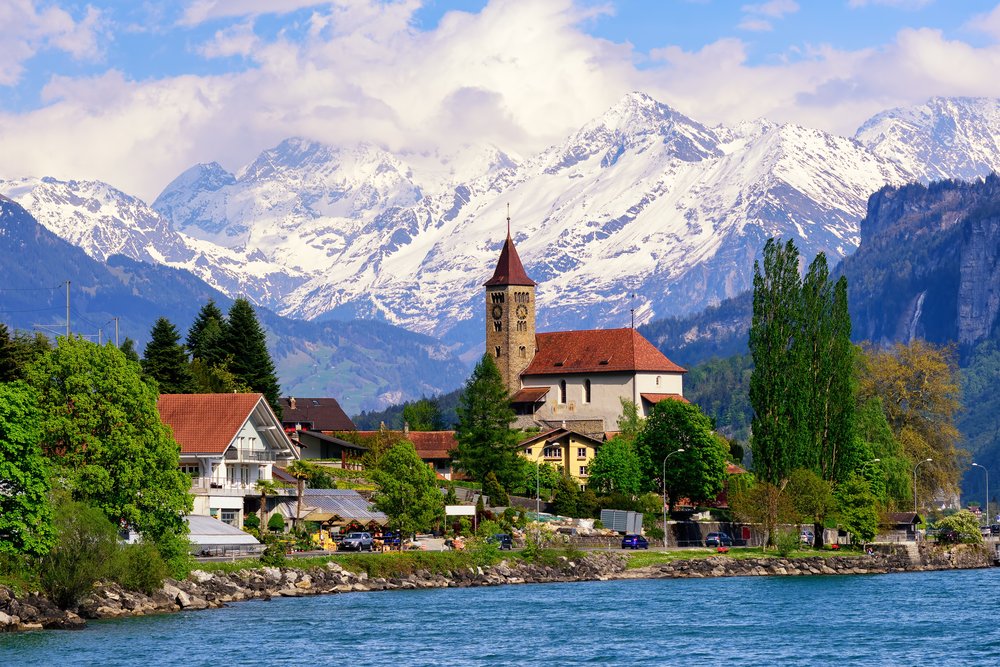
Located just around 90 minutes away from Schiltorn is Interlaken, one of the most-visited resorts in Switzerland. The proximity of both landmarks explains the similarities with the activities they offer. Both are ideal for paragliding and other outdoor activities, but they can charm you in different ways.
Interlaken is basically an open space of blooming fields, exceptional mountain vistas, and quaint cafes and cafeterias. The town gives you unparalleled views of Monch, Eiger, and Jungfrau tower, making it a hot spot for outdoorsy travelers. While winter calls out for skiing and snowboarding activities, you’ll find endless things to do in Interlaken regardless of the season.
If you plan to book a trip to Switzerland in summer, dropping by this humble region is one of the best ways to enjoy unlimited–not to mention, fun-filled–activities. Hike, climb, kayak, paraglide, hang glide, or skydive–sky is the limit when you’re in Interlaken. Tired of gliding and sliding? Take advantage of its huge network of mountain railways, chair lifts and cable cars!
Bern
Last but definitely not the least in terms beauty and majesty is Bern, the Swiss capital city that also happens to be listed as a UNESCO World Heritage Site. Welcoming visitors with its cobblestone streets and historic landmarks, Bern never fails to radiate that warm and classy, old-century vibe.
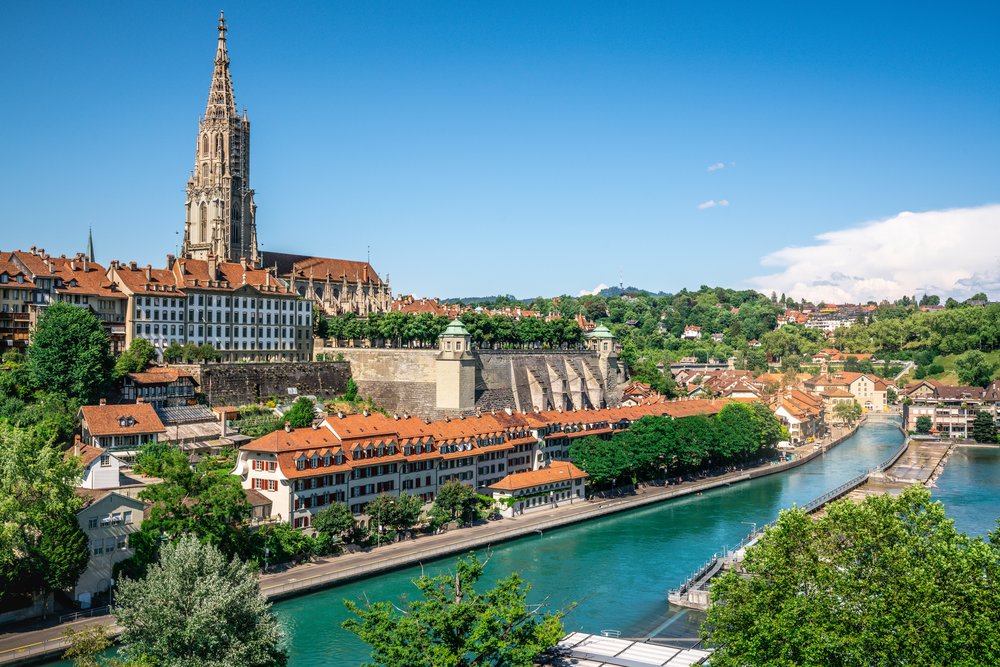
Located in the River Aare peninsula, Bern is a medieval city that proudly boasts its history. Engraved in its bars, shops, parks, and markets is the Swiss culture that has been well-preserved over the years. A day in Bern can give you a chance to explore some of its famous tourist attractions. This includes Switzerland’s tallest cathedral, which gives you great, panoramic views from its tower. Here, you can also see a medieval clock like no other. Zytglogge, as the locals call it, is a clock tower that has moving puppets. It was built in the 13th century, and it served as an important part of Swiss history.
Aside from these iconic landmarks, what separates Bern from other cities is its great balance of art and culture. You can find the most impressive and fascinating galleries, museums, and artwork collections here, along with renaissance-style buildings.
And oh, when you’re in Bern, don’t forget to visit Bear Park, which offers a family-friendly experience. Locals love it, and you will, too!

